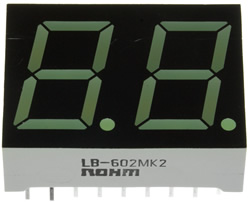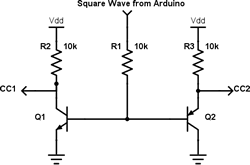This exercise will give you an indication of your level of competency with the concepts to date and in relation to your peers. You may wish to use the outcomes of this activity to gauge whether you're investing enough time and effort, both in class and after school, at staying on top of the concepts and hence the wisdom of electing to continue in the final year of our program. If at the end of this exercise you feel yourself lacking, there's time to do something about it as half the year is still ahead of us.
Some of the outcomes you should reflect on at the end of this exercise include,
- The responsibility of completing tasks that you were previously assigned for no other reason that you were asked to do so.
- The ability to maintain an active and independent competency with the concepts at all times.
- Your degree of connectedness and engagement in our program by how often you are reviewing our course page and email conferences. For example, I am posting this page on Saturday January 23 at 6 pm. If you are reading this for the first time after having just sat down for Period 3 on Monday January 25, well ...
- The ability to read and comprehend the description of a technical task and to understand its expectations without the need for additional clarification or interpretation.
- The organization of your toolkit and other resources.
- The ease and efficiency with which you can complete the task.
The Challenge.
- You are to complete this task on your own. You are not to ask a friend for assistance, or me.
- Everything you need to complete this task, except one additional part that you will be provided with, is in your toolkit. If they are not, or your toolkit is in your locker, or worse, at home, you are not functioning to an acceptable level of expectation.
- You are expected to complete this task by the end of the period. If you finish before 12:30 raise your hand and I will come to your desk for your demonstration. If it is successful, you may leave for an early lunch. You get one chance for a demonstration; if it was unsuccessful you are to remain for the balance of the period.
 All ACES are expected to have completed this challenge, on their own, for the START of Wednesday's class, at which point I will you and record the extent of your success.
All ACES are expected to have completed this challenge, on their own, for the START of Wednesday's class, at which point I will you and record the extent of your success.- You are to remain in your seat for the duration of this task. If your kit is missing a component, simply wire everything else and complete the task after class, before Wednesday.
- Your current circuit is driven by a sketch that defines a bit→segment map for the 10 decimal digits and employs a SINGLE 74HC595 Shift Register to cycle continuously through the SINGLE digits from 0 to 9 on a SINGLE common cathode 7-segment display. Let's define this task by the ordered triple,
(MAP, SHIFT, DISPLAY) = (SINGLE, SINGLE, SINGLE).
- You have been provided with the DUAL seven-segment display device pictured to the right. Source its datasheet on the internet and familiarize yourself with the pin mapping.
 Your task is to implement the sketch Dual7Segment.ino that will use the same SINGLE bit→segment map and the same SINGLE 74HC595 Shift Register to cycle continuously through the numbers from 00 to 99 on this DUAL device. Let's define this task by the ordered triple,
(MAP, SHIFT, DISPLAY) = (SINGLE, SINGLE, DUAL)
Your task is to implement the sketch Dual7Segment.ino that will use the same SINGLE bit→segment map and the same SINGLE 74HC595 Shift Register to cycle continuously through the numbers from 00 to 99 on this DUAL device. Let's define this task by the ordered triple,
(MAP, SHIFT, DISPLAY) = (SINGLE, SINGLE, DUAL)- To do so will require a persistence of vision strategy that will employ one additional Arduino data pin that will supply a square wave (HIGH,LOW,HIGH,...) to the base pins of an NPN and PNP transistor (3904 and 3906), effectively alternating between displays.
- The counting should be undertaken a 1Hz (one second interval per number). Adjust the frequency of the square wave so the eye does not detect any flicker (>>24 Hz).
- A video of the display counting from 00-99 is scheduled for viewing at 12:30 PM today:
 PoV: Dual 7-Segment Display.
PoV: Dual 7-Segment Display.
 All ACES are expected to have completed this challenge, on their own, for the START of Wednesday's class, at which point I will you and record the extent of your success.
All ACES are expected to have completed this challenge, on their own, for the START of Wednesday's class, at which point I will you and record the extent of your success. Your task is to implement the sketch Dual7Segment.ino that will use the same SINGLE bit→segment map and the same SINGLE 74HC595 Shift Register to cycle continuously through the numbers from 00 to 99 on this DUAL device. Let's define this task by the ordered triple,
(MAP, SHIFT, DISPLAY) = (SINGLE, SINGLE, DUAL)
Your task is to implement the sketch Dual7Segment.ino that will use the same SINGLE bit→segment map and the same SINGLE 74HC595 Shift Register to cycle continuously through the numbers from 00 to 99 on this DUAL device. Let's define this task by the ordered triple,
(MAP, SHIFT, DISPLAY) = (SINGLE, SINGLE, DUAL)